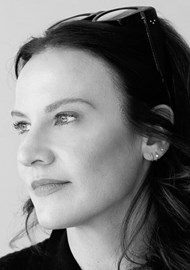As a nurse involved in providing a specialist dermatology service I was invited to attend a continuing professional development (CPD) accredited study day at The University of Hertfordshire on an update for topical photodynamic therapy (PDT). The agenda was comprehensive and varied with a focus on the elements of PDT from a practical perspective, delivered by practitioners with considerable expertise in its application.
The programme leader Madeleine Flanagan opened the session, welcoming the speakers and audience to the day, and provided an overview of the agenda.
Dr Sandra Campbell, an Associate Specialist in Dermatology from The Royal Cornwall Hospitals NHS Foundation Trust, described the theory and origins of PDT supported by some excellent personal clinical case studies and slides for the licensed indications of the treatment. She also shared some thought provoking off license clinical cases and discussion around these, supported by before and after photography.
Paula Oliver, Nurse Consultant, discussed the practicalities of PDT using Methyl aminolevulinate, in line with the current recommended treatment protocol. Paula shared experiences of auditing a PDT service, and the importance of this in clinical practice to measure outcome and identify areas for improvement, in line with National Institute for Health and Care Excellence (NICE) endorsement for PDT indications. This reinforces the importance of appropriate referral, consent and clinical governance. As an example of best practice, Paula also shared a post-treatment PDT treatment letter, designed to be tailored for individual patient use. Many practitioners in the audience could resonate with examples of clinical practice where patients have visited their GP practice for dressing changes and in the absence of any post-treatment documentation, have been unable to provide sufficient information with regard to the treatment that they have undergone and the likely presentation of the lesion following PDT.
Dan Sermon, Senior Photodynamic Therapy Executive for Galderma delivered an interesting talk on the business case for PDT, involving the audience in an exercise to assess the annual budget impact of a PDT service which was a useful framework for practitioners to assess the financial viability of setting up and running a PDT clinic as an addition to their dermatology service(s).
Dr Natasha Kapur, Consultant Dermatologist at The Whittington Hospital NHS Trust, discussed the current evidence for existing licensed applications of PDT as well as the scope of research to date for the use in other medical conditions, cosmetic rejuvenation and the future of PDT, with reference to well known papers from medical specialists. This generated good discussion amongst the audience.
Sister Eilir Evans, from Oxford Churchill Hospital NHS Trust, shared her experience of their PDT service using daylight to substitute the requirement of an LED light source. Due to the recent timescale of this treatment principle, no data was available to measure the outcomes of treatment, but the patient feedback had been extremely positive in terms of levels of discomfort. The department is currently collating the patient data to audit the effectiveness.
The session was extremely worthwhile for practitioners with an interest in, or those currently undertaking PDT. The day was well organised and structured with helpful administrative staff to assist with any queries, prior to, and on the day. The lectures were well attended and enjoyed by the audience and it also presented an excellent opportunity for networking with peers. It was evident that care had been taken to ensure it was not over subscribed and that the day ran to schedule.
Visit http://www.herts.ac.uk/courses/topical-photodynamic-therapy for further information.




